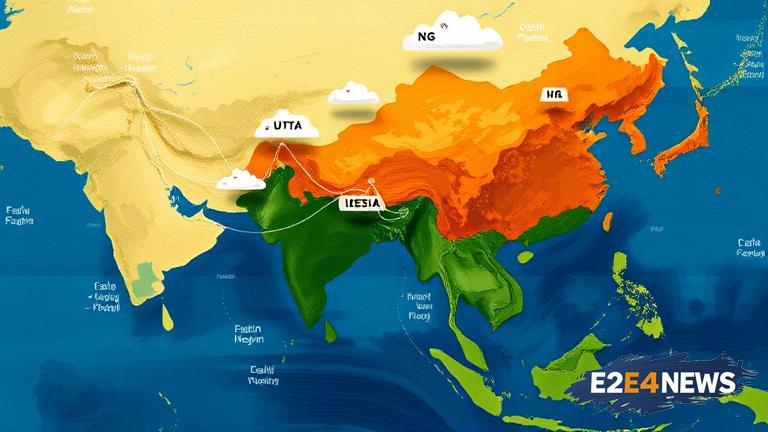The Trump administration’s efforts to promote US liquefied natural gas (LNG) exports have put Asia in a difficult position, as the region struggles to balance its energy needs with its climate commitments. The US has become a major player in the global LNG market, with exports expected to continue growing in the coming years. This has led to increased pressure on Asian countries to import more US LNG, which could have significant implications for the region’s energy mix and greenhouse gas emissions. China, Japan, and South Korea are among the largest importers of US LNG, and their energy policies are being shaped by the availability of this fuel. However, the increased reliance on LNG could hinder Asia’s progress towards reducing its carbon footprint and meeting its climate goals. The use of LNG as a bridging fuel to transition from coal to renewables has been a topic of debate, with some arguing that it is a necessary step towards a low-carbon future, while others claim that it could lock in fossil fuel infrastructure and delay the transition to cleaner energy sources. The Asian region is home to some of the world’s most polluted cities, and the increased use of LNG could exacerbate air pollution and public health problems. Furthermore, the extraction and transportation of LNG have their own environmental impacts, including methane emissions and habitat destruction. The Trump administration’s LNG push has also been driven by geopolitical considerations, as the US seeks to increase its influence in the region and counterbalance the growing energy presence of other countries, such as China and Russia. The US has been actively promoting its LNG exports through various diplomatic channels, including the US-Asia Pacific Comprehensive Partnership for a Sustainable Energy Future. However, some Asian countries have expressed concerns about the high cost of US LNG and the potential impact on their energy security. Despite these challenges, the demand for LNG in Asia is expected to continue growing, driven by the region’s rapid economic growth and increasing energy needs. The International Energy Agency (IEA) has forecast that Asia will account for more than 50% of global LNG demand by 2025. As the region navigates its energy and climate challenges, it will be important to consider the role of LNG in the transition to a low-carbon economy and to develop strategies that minimize its negative impacts. The use of LNG as a bridging fuel will require careful planning and coordination to ensure that it does not delay the transition to cleaner energy sources. Ultimately, the future of LNG in Asia will depend on a range of factors, including government policies, technological advancements, and changes in global energy markets. The region’s ability to balance its energy needs with its climate goals will be crucial in determining the long-term sustainability of its economic growth and development.
